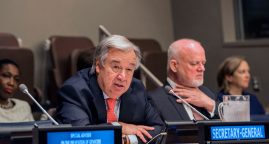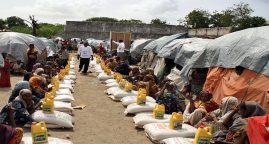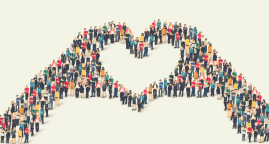Africa for pessimists: 2017 in review
Article published on Mail & Guardian website on 12/26/2017 by Simon Allison
This has been another tough year for the world, and the African continent has endured more than its fair share of conflict and crises. These are the stories that are keeping Africa Editor Simon Allison awake at night.
But it’s not all bad, right? Right. Read our ‘Africa for optimists: 2017 in review’ for a less cynical take.
Demographic dividend, or demographic disaster?
By 2050, Africa’s population will more than double, from 1.2-billion today to 2.5-billion. That’s according to projections from the United Nations Children’s Fund, which hopes that this extraordinary growth will deliver a “demographic dividend” that could “lift hundreds of millions out of extreme poverty”. It’s a nice idea, but the theory rests on precarious foundations — it depends entirely on all these new Africans being provided with the necessary education, healthcare and infrastructure to thrive.
The opposite scenario, as envisaged by former Nigerian president Olusegun Obasanjo, seems more likely. He says that his greatest fear is that exponentially growing numbers of uneducated, unskilled, unemployed and frustrated youth will be impossible to control. When that frustration explodes, which it must, there will be widespread political instability that cuts across boundaries of borders, class and ethnicity.
It is a threat that policymakers are starting to take seriously. Earlier this year, parliamentarians in the Economic Community of West African States (Ecowas) suggested instituting a ‘three child policy’ to reduce the region’s birth rate, which currently sits at between five and seven children per woman. Obasanjo says this policy would be impossible to implement, and instead governments should put far more resources into girl child education — including sex education — which would allow women to make informed choices about about conception. Olusegun Obasanjo’s greatest fear. A quarter of the world will be African by 2050
Related Articles
World needs to move beyond ‘conceptual debate’ and improve protection from atrocities, urges Guterres
09/06/2017. António Guterres called for concrete action to protect the vulnerable
Doing good and doing well
05/04/2017. A growing share of aid is spent by private firms, not charities.
Giving Away Billions as Fast as They Can
10/20/2017. Many new philanthropists appear less interested in naming a business school after themselves than in changing the world.





